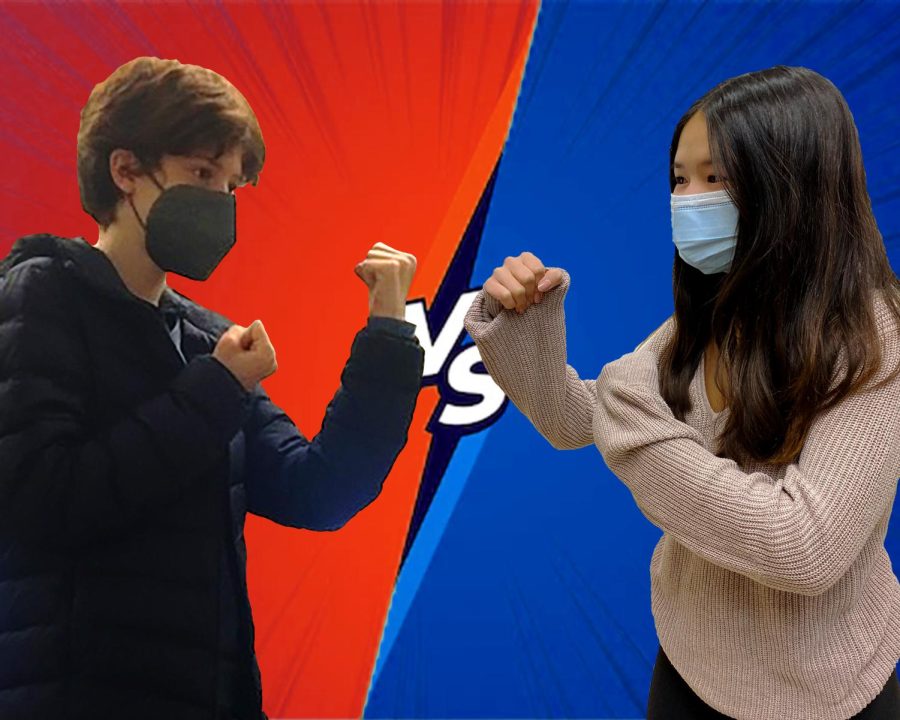Yes, BPS Should Lift Its Mask Mandate
Within a week of Governor Charlie Baker’s announcement that the statewide mask mandate for schools would be lifted, over 120 school districts across Massachusetts announced they would be lifting mandatory masking. Boston Public Schools, however, announced they would continue to require masks within the district. But this is a mistake: as rates of death and transmission decrease and vaccination rates increase, now is the time to give students and families the choice to go to school without masks on. Both the science and the experiences of students call for our officials to follow suit in giving students the choice of unmasking.
The understanding throughout this pandemic has been that once a certain level of risk is no longer present in the general community, people would regain the right to make personal decisions about their behavior regarding the spread of COVID-19. As a society, levels of risk are inherent and unavoidable. When the health risk falls low enough, it is the people’s right to make their own medical choices.
This is the reason why many people have decided to cautiously fall back into pre-COVID-19 activities without maintaining masks and social distancing.
It is time for officials to extend this autonomy to schools, especially in a city like Boston. Even with the majority of school districts lifting mask mandates, COVID-19 rates continue to fall throughout the state, down four percent in hospitalization, 16 percent in Intensive Care Unit admission and 36 percent in deaths over the past two weeks per data collected by The New York Times. Even as new cases inevitably appear, cases remain at their lowest levels nationally since last July.
These trends are reflected in Boston, as cases across Boston Latin School fell to six last week according to Head of School Rachel Skerritt’s weekly update. This is all happening while indoor mask mandates have been lifted for venues including stores, restaurants, gyms and municipal buildings, showing that lifting mask mandates and giving people the right to choose has ultimately been a successful endeavor.
“The science says that cases are falling, and with masks already being optional in the cafeteria [while eating] and in sports, […] I’d be ready to take mine off,” says Mark Snekvik (IV). This feeling is growing as sites with potential for high transmissions, such as the BLS dining hall, will be less crowded in the coming warmer months with more students choosing to sit outside.
Many argue that lifting the mask mandate during a time with the potential for a coming wave would leave high-risk students and families more at risk of COVID-19. Lifting the mandate, however, is about choice, and those families will still have the opportunity to wear masks in their day-to-day life, which the majority of the BLS community will likely continue to do.
With 72.7 percent of the Boston community vaccinated per city data and the majority of the BLS community vaccinated, levels of risk fall even lower.
Although caution is still necessary, we are finally at a place where individual choice can be restored, which includes adding schools to the growing list of mask-optional venues. It would finally give students the option to breathe freely during gym, interact with peers without face coverings and see their friends’ faces again for the final months of the school year.
Disclaimer: This article was finished April 2 and does not reflect the current rise in COVID-19 cases. Lifting the mask mandate would be contingent on low or stable cases, hospitalizations and deaths.
No, BPS Should Not Lift Its Mask Mandate
In the past few years, the subject of mask-wearing has been a constant source of debate. Masks are an essential part of keeping COVID-19 cases at a minimum, proven time and time again by the recent surges of the Omicron and Delta variants. In addition to shielding the individual from viruses, they also provide protection to others against any additional contagious sickness the wearer could be carrying.
While a decrease in new cases has brought about the argument for a change in mask mandates and policies within schools, the inconsistent patterns of cases over the past few months tell a different story.
The recent surges of COVID-19 cases due to both the Omicron and Delta variants follow the pattern of a spike that occurs right after a period when cases are low and mask restrictions begin to relax. This suggests that what seems like the best course of action one week could have negative consequences the next. If the mask mandate is lifted this week, what would the repercussions of that decision be shortly after, and at what cost?
When dealing with such an unpredictable and novel virus, it is important to remember and acknowledge the different impacts that it might have on people from all walks of life. Although many young people might not feel extreme symptoms if they were to contract COVID-19, those with compromised immune systems would be severely affected. Beyond that, there might be others who do not wish to bring home the illness to elderly or immunocompromised family members. It is necessary to recognize the risk that removing masks poses to everyone, not just the vast majority.
While some may argue that masks hinder personal connection due to the lack of genuine face-to-face communication, this inconvenience comes with plenthy of upsides since the beginning of the pandemic two years ago. Without masks worn properly and mandates kept in place, things that people are now able to do, such as commuting, attending school or work and going to social events, would be impossible. Masks slow down the rate in which COVID-19 spreads, and in doing so, allows people to interact with one another while also staying safe.
Slowing the spread of COVID-19 is already difficult, but removing mandates in school would introduce an extra layer of challenges, especially with the many high-traffic areas in the building such as hallways, stairwells and the dining hall. In these spaces, students are often shoulder-to-shoulder with one another with no possible way to exercise social distancing. If one student were to have COVID-19, the chances of it spreading to another student in one of these spaces would be dramatically higher if that student was not wearing a mask. Although indoor space is not an adjustable variable, preventative mask-wearing is.
After two long years, finding a new normal has been a difficult task for everyone. Through this delicate process, it is important to keep in mind the reasons why mask mandates were put into place. Even though the policies may be a barrier or a bother to some, the benefits that masks bring largely outweigh the slight discomfort — especially when it comes to the safety of the entire community.

